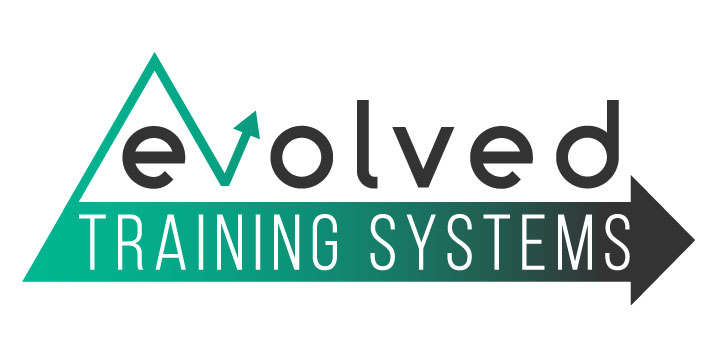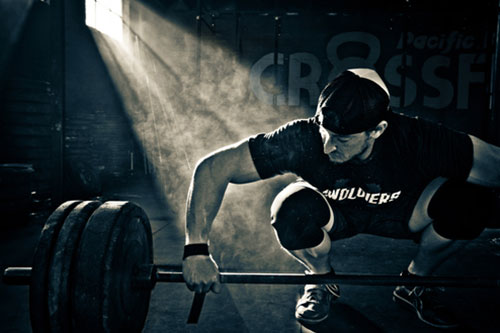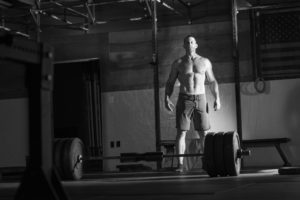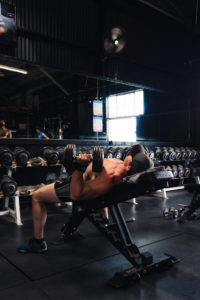2015 marks the beginning of my 18th year in a weight room. The amount of knowledge one can accrue in 18 years is astounding. I have had the privilege of interacting with a ridiculously large number extremely educated and informed minds in the iron game. I have been influenced by many of these athletes and coaches, and I have been able to implement a variety of these aspects into my own training. Each of these experiences has helped to mold the training systems by which I adhere and promote at the current time.
18 years is such a long time that there has been a unique mix of practical application and science that has formed these protocols. 18 years ago, the iPod wasn’t invented yet (this occurred in 2001), and this is what cell phones looked like in 1997 (insert pic). Therefore, it shouldn’t come as a surprise that science has also come a long way since then. As science has progressed, this inevitably influenced some of the lessons I had learned, and I became inclined to incorporate new elements into my own personal training.
The lessons of the iron are malleable, and constantly evolving. Here are a couple examples of past views versus current views with a brief explanation for each:
Past view – Soreness is an indicator of a successful workout
Current view – Progressive overload is an indicator of a successful PROGRAM
Progressive overload means increasing weight and getting stronger each session. Being sore has no effect on the quality of your training session. In fact, in many cases, soreness actually can be detrimental to progress. Don’t mistake this as believing that you shouldn’t be sore – just understand that soreness is not relevant as far as determining the quality of your training. There are so many factors that determine whether you get sore, with the most prominent being training variation, or lack thereof. As an example, the first time you do deadlifts, you will probably be really sore, but if you do deadlifts every week for 6 weeks, you won’t be as sore in week 6 as you were in week 1. Does that mean that you are no longer getting a benefit from this exercise? I encourage you to use progression as the primary indicator of successful training, instead of soreness. When the exercise stops producing results in your training, we can then switch to a different “primary” exercise. Plus, who really wants to Live Sore? That doesn’t really seem to enhance life much, and isn’t quality of life the real reason we all do this exercise thing?
Past view – Train with the heaviest possible weight for the required number of reps each session
Current view – Listen to your body, and work as hard as possible to keep from failing reps
There are so many factors that go into a quality training session. Obviously, progressive overload has to the top priority, but some days, you will warm up and the weights just feel heavy – or your mind feels groggy, and you just can’t apply the necessary level of focus and aggression to ensure progressive overload. This isn’t the end of the world, and once you can accept that these days will occur, you will be able to get a lot more out of training without beating yourself up over a bad session. The largest problem I see in watching athletes practice Olympic Lifting is a constant need to test their limit each training session. Why? In fact, I would encourage you to try and NEVER fail a rep. Failing reps is reinforcing bad technique, creating improper motor patterns, and decreasing confidence. Regardless of whether you are having a good day or a bad day as you battle the weights, strive to always SUCCEED and not to fail, even if it means lowering the weights for the day and concentrating on form and feeling the proper positions of the movement. Come back the next week and create that progressive overload. This will keep you healthy (decreasing chance of misuse injuries), increase confidence with the movement, as well as develop quality patterns of movement. The same applies to Back Squats, Bench Press, Deadlifts, and every other strength movement in your program. Remember these words – “Practice doesn’t make perfect. Perfect practice makes perfect, and improper practice makes bad habits permanent.”
Past view – Lift the weight with a slow and controlled tempo during the entire movement
Current view – Lower the weight under control and explode up with as much force as possible
Science has come a long way on this specific issue in regards to the “slow movements.” Obviously, this is irrelevant in Olympic Lifting, where we do not generally perform the “lowering” portion of the movement – but is very relevant for all other exercises from a Back Squat to a Strict Pull-up. First thing that you should be aware of is that approximately 80% of muscle is built during the “eccentric” (lowering) portion of the movement. Furthermore, all athletes are stronger in the eccentric portion than in the concentric (raising) portion. An example of this would be to look at a squat. You will notice that even at one-rep max lifts, where you end up failing the rep, you can still successfully lower weight under control. So, if we are stronger during this portion of the movement, why not take advantage of that mechanism and do it slowly and under control? Beyond that, doing a controlled negative will also keep you healthy. How many times have you seen people drop to the bottom of a squat, or from the top of a pull-up, and winced at the thought of what that must be doing to their joints? So, this view remains unchanged over the years. The part that has changed is the speed at which you perform the concentric. Science has shown that you should always strive to lift the weight as fast as possible. Oftentimes, the weight won’t move fast, because you are fatigued, and the weight is heavy, but you should still be attempting to perform it explosively. This will recruit a ton more muscle fibers, specifically the fast-twitch fibers that are responsible for muscle growth and power output.
So these are some of the lessons of the iron that I have learned (and re-learned) throughout the years. I plan to keep a database of other viewpoints that have been altered throughout the years and hope to continue writing posts in this fashion over the course of the next few months. As science progresses, and while personal experience and implementation cross paths with scientific development, we must continue to be malleable and adapt in order to thrive and achieve the best results possible.




